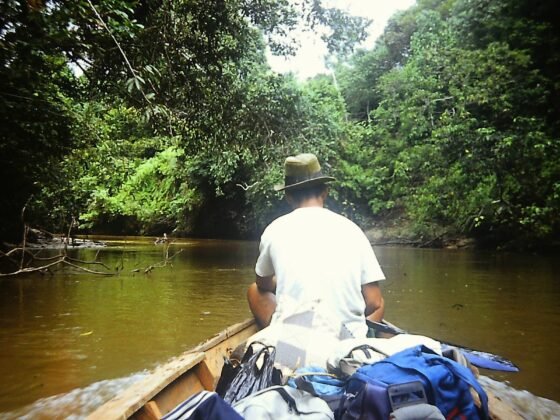My first trekking trip was years ago as a student in Minnesota. Back then; I didn’t even plan for the trip. A group of friends came around and suggested it spur of the moment. The next day, we were off to Big Spring Falls in Sandstone’s Banning State Park.
Although Big Spring Falls is just a 4-mile scenic trail that everyone can do on their own, it’s always advisable to prepare for a hike no matter how short. In this post, I’ll be sharing some basic things you must organise to make the most of your trek. From preparatory workouts to hiking gear and food options, this piece has got your back.
But before we proceed, if you’ll be travelling to the United States for your hike, you need not worry about Trump’s immigration ban, especially if you are from the affected countries. Now that the executive order has been reversed, you can enter the U.S., so long as your visa is valid.
However, citizens from visa waiver countries are still obligated to apply online for an ESTA approval before making their trip to the U.S. An ESTA is a document that allows nationals from the designated countries to travel to the United States. The U.S. Customs and Border Patrol in the airport will hold up tourists who arrive in America without an ESTA, and may turn you away. If you need help getting an ESTA then contact a company like www.esta-approval.com/.
Get Your Gear On!
Hiking is not easy. To borrow a line from Forrest Gump, it’s no box of chocolates. Like any other heavy workout activity, it requires proper check-ups and planning.
These three areas are most important:
- Hiking muscles;
- Cardiopulmonary fitness; and
- Hiking gear.
- See a physician
Before you embark on any trail trek, be sure that you are in the best health conditions. Many people have made the mistake of starting a hike, only to discover halfway that they are unfit. Ensure that you get a doctor’s blessing to proceed. If you have been inactive for a long time, the doctor may recommend some exercise programs to get you in shape.
- Here are some tips
Start by walking regularly. If your office is close to your home, shirk driving or public transport and walk instead. Do the same for your shopping and other extra-curricular errands. Like a turtle, start slow, 1.5 miles, 2 miles, 3, and 4 miles. Progress to a longer walk every day with some break days in between. Jogging, running, and stretches can prepare your calves. Even climbing the stairs is a good way to get in shape.
- Walk right
The way you walk could affect your progress or even drain your strength faster. It may sound strange, but it’s true. You don’t feel this when you walk to the kitchen for a sandwich, but when you walk over 5 miles of alpine terrain, the smallest defect can present a painful issue. When you walk, make sure your heel touches the ground first, roll on to your toes and propel yourself forward.
- Mix up the terrain
You’ll be hiking across rocky, sandy, and gravel terrains. It only makes sense that you allow for these in your training. Limit your treadmill workouts to a minimum and focus more on rigid grounds. Find out the real conditions of your trek and mimic the realities in your training.
- Light is right
When preparing your trip, the backpack shouldn’t weigh down on you or it’ll be doing more harm than good. You are not Sisyphus. So, do it light (assuming this is for an average 4 to 6-mile hike). Take only water and a first aid kit. It’s all the more essential to hike light when you are walking through populated areas.
- Wear the right boots
Your footwear is equally important. Neglecting your feet would be at your own peril. Invest in a good pair of quality boots. Boots may vary according to the climate and nature of your trek trail. However, they must have the following qualities; lightness, comfort, durability, and waterproof. Don’t buy your boots a few days to the trek. You want to get them months early so your feet can grow more accustomed to them.
- Stock up on your carbs
Hydration and food are essential to your trek. Ensure that you eat healthy on the days leading up to your trek. Foods such as dried fruit, nuts, oat bars, jerky, and chocolate are instant sources of energy and protein. Find out if you’ll be crossing a stream or waterfall; both make good sources of fresh water. Learn to eat on the move as you train; it helps your body digest food under rigorous conditions.
Bonus tip: Go with a friend or as a group for more security.
Ready to go now? Let’s do it!












